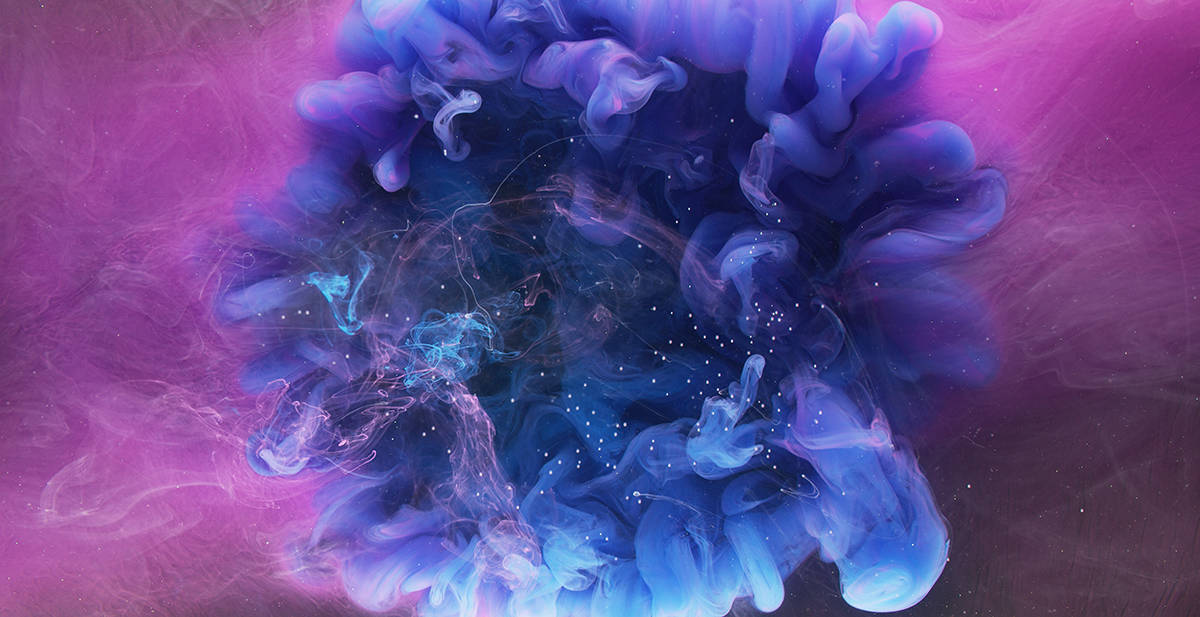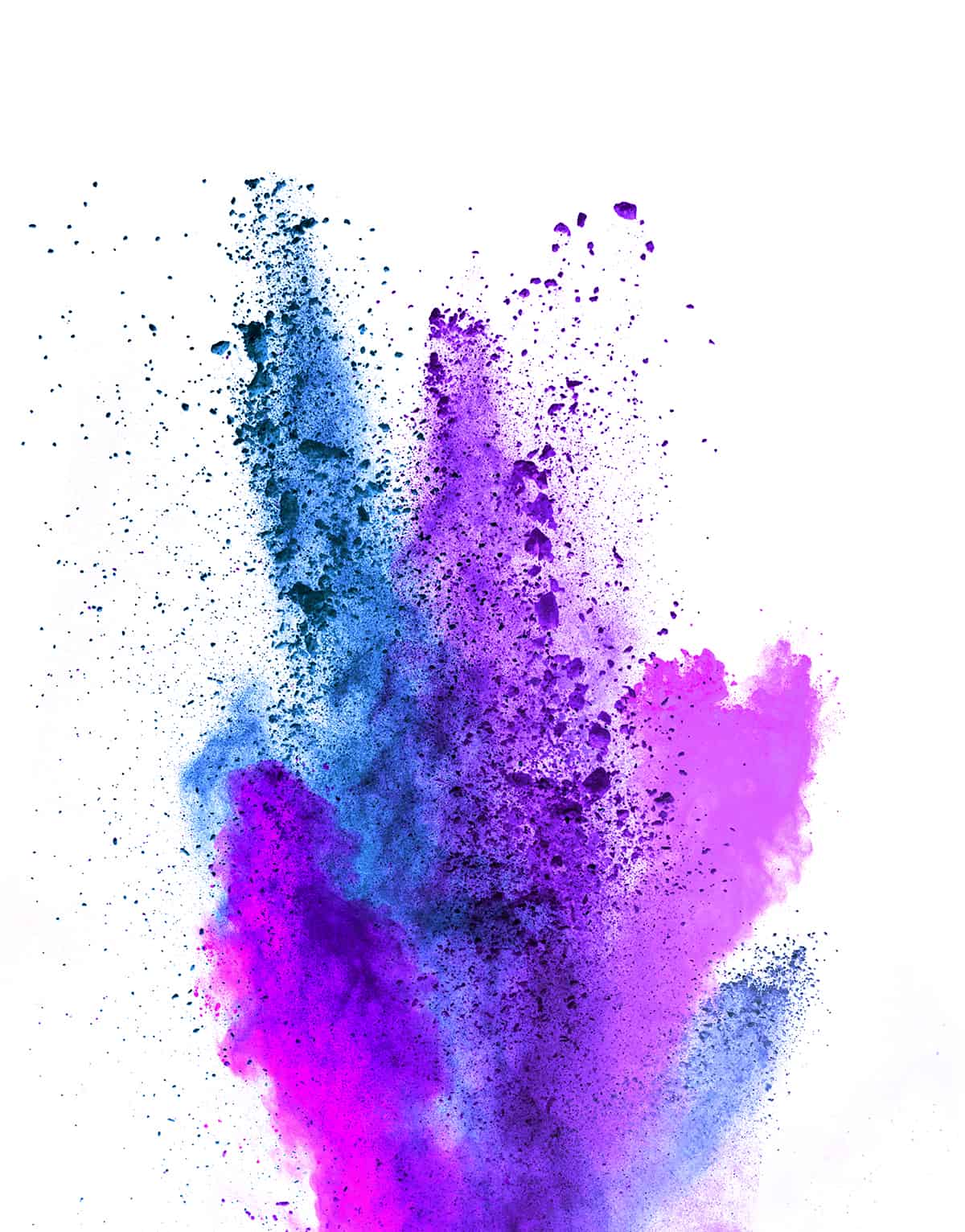Blue and purple are analogous colors because they sit next to each other on the basic color wheel. Blue is a primary color, while purple is a secondary color that is created by mixing blue with red. When a primary and secondary color are mixed, a tertiary color is formed.
In this case, when blue and purple are mixed, the resulting color is called blue-purple or blue-violet. This is a color that sits halfway between blue and purple and has a cooler temperature than regular purple, though it isn’t quite as cool as solid blue.
Here we look at the types of colors which can be created by mixing blue and purple and how these can be used in home decor.
Mixing Blue and Purple Paint
Before you mix blue and purple paint together, it’s useful to understand the principle of color theory. Knowing this will make it easier to get to the final color you desire. Blue is a primary color, which means it is not created by mixing other colors together. Purple is a secondary color, so it is created by mixing other colors. True purple is achieved when an equal amount of primary blue and primary red are mixed together.
If you are mixing equal parts true purple with primary blue, you are actually mixing blue with a mix of blue and red so that the total ratio of colors used will be 75% blue and 25% red, or three parts blue and one part red. The resulting color will be a shade of purple, but it will lean slightly towards having a blue tone, like a dark lavender or amethyst.
If you want to create this color, but you don’t have purple paint to start with, then you can instead mix three parts blue with one part red and get the same results. This is because this will be the same as mixing one part blue with one part purple.
Purple and Blue Mixture Ratios
If you mix one part blue with one part purple, the resulting color will be halfway between blue and purple. However, you can alter the ratios to get different results. By lowering the proportion of blue in the mixture, you can achieve a slightly warmer purple color because this will allow more of the red from the purple to come through.
For example, if you mix one part blue with two parts purple, the primary colors involved in this mix will be at a ratio of two parts blue to one part red. This will create a more vibrant purple color that is closer to true purple but with a subtle blue tone.
The Symbolism of Blue and Purple
Symbolism of Blue
Blue is a color that is often used to represent the ocean or the sky, and as such great expanses of blue, like a painted wall, can create an atmosphere of calm. Mid-blue or pale blue colors are seen as soothing and tranquil, while darker shades of blue can be stormy or mysterious due to their likeness to deep waters or dark nights.
Blue is regarded as a peaceful color that feels safe and secure, and as such, it is one of the most popular families of color used in home decor. Blue is an easy color to be around, which is another reason why it is widely chosen as a paint color in interior design for homes.
Symbolism of Purple
Purple is a color that is widely used to represent royalty and elegance. This is most likely because of the association of purple clothing with nobility and aristocracy throughout history. In times gone by, purple was known as one of the most difficult colors of dye to source, and as a result, this pushed the price of purple dye up.
Because of the high price tag, only the wealthiest members of society were able to afford clothes and cloaks treated with purple dyes, and this has translated into the association of purple as a regal and royal color. This link with royalty and prestige means that purple can also represent wealth, grandeur, luxury, and extravagance. It can be put to good use in home decor to create a space which feels sophisticated, glamorous, and elite.
The symbolism of Blue Mixed with Purple
When blue is mixed with purple, a blue-purple color is achieved. The fact that both blue and purple hues shine through makes the symbolism of the color a cross between both blue and purple. As the intensity of the purple is toned down by the blue, the resulting blue-purple color feels less royal and regal, yet it still retains a sense of power and importance.
The blue tones in the shade give the color a cooling energy, which feels soothing and calming. Blue-purple isn’t as tranquil as pure blue, but it does have a relaxing quality which means it works well in a variety of uses in home decor. Use this color for paint in a bedroom to create a space that feels relaxing while also maintaining an air of elegance.
In a living room, opt for cushions and other soft furnishings in blue-purple to bring a sense of class and importance to the space, with cooling energy.
Using Blue-Purple in Home Decor
Upcycled furniture
To add a flash of blue-purple to a room, painting old furniture is a good way to go. This brings new life into more dated items, and it’s so easy that anyone can do it. Starting with a piece of wooden furniture such as a dining chair or a coffee table, first, sand the wood down so that it is smooth and any shine from previous paint or varnish has been removed.
Next, apply several thin coats of blue-purple paint, allowing drying time in between each coat. Once finished, use wax or varnish to seal the paint and make it more hardwearing.
Wall paint
Blue-purple is a vibrant yet cooling color that can be a nice choice for wall paint. Use it across all walls in a room for an intense atmosphere, or use it on a single wall to create a feature or accent wall. Alternatively, add white to your blue-purple mixture to tone it down and make it more palatable to use across a whole space.
Soft furnishings
Using splashes of blue-purple works nicely in a neutral room to add a sense of fun and interest. You can add throw pillows to sofas, chairs, or the bed, along with blankets, a rug, or a new set of curtains.
Changing up soft furnishings is ideal if you’re unsure whether you want to commit to a new color scheme because you can easily swap them out if you change your mind, without having to re-paint a room or lose money on large investment pieces.
Accessories
If blue-purple is your accent color, small yet bold splashes of this color in accessories can look striking and modern. Opt for blue-purple vases, candles, or lamp shades set against a white background so that the accessories make a noticeable impact, or place them close to orange furniture for a strong contrast that will make the color scheme pop.







